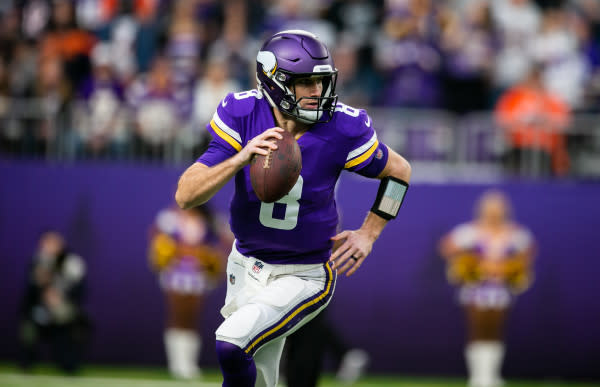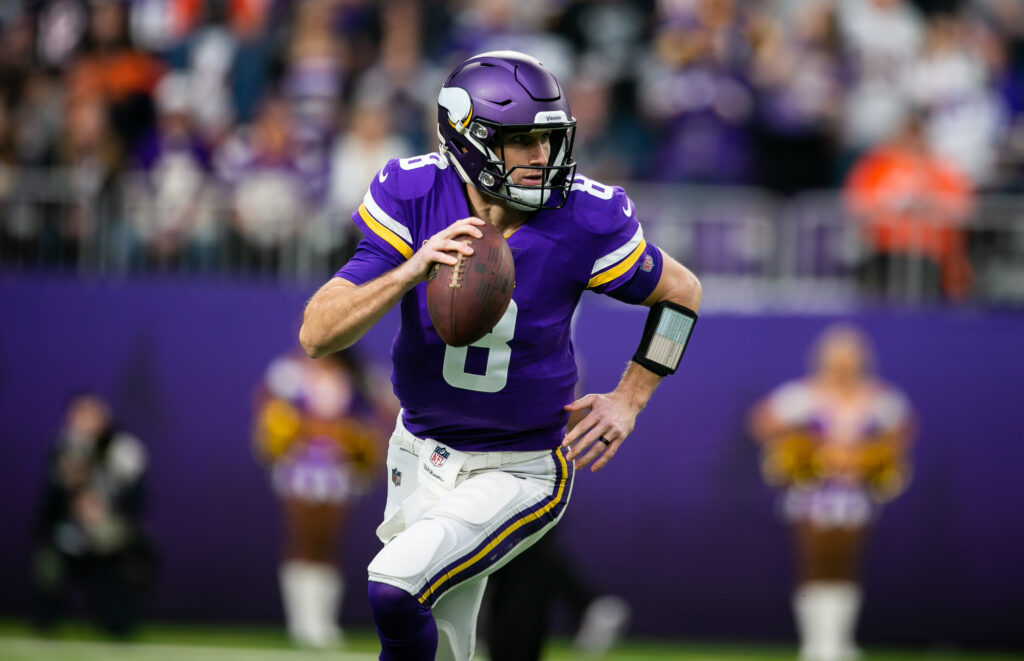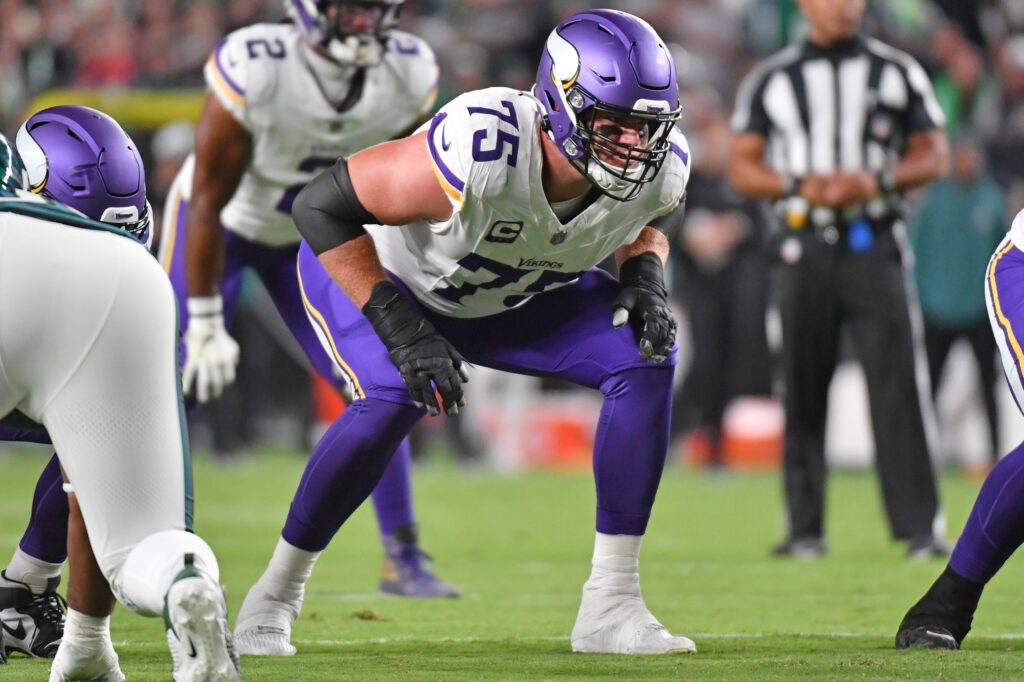
Matthew Coller is an experienced football writer who covered the Vikings for 1500ESPN and Skor North for four years. Also a published author, Coller writes a weekly Vikings column for Bring Me The News, and you can find more of his work at Purple Insider.
As the Minnesota Vikings watch the AFC and NFC Championship games this weekend, there should be one thing on their mind: How can they be playing at this time next year?
While the Vikings can’t start making moves in free agency until March and the draft doesn’t come around a month-and-a-half after that, they can get an idea of how far away they are from competing with the conference champion-level teams and shape their offseason accordingly.
So let’s have a look at some key statistical categories and what they say about the Vikings’ route to playing in late January 2022 and how far they need to go in order to get there…
Point differential
- Bills: +126
- Chiefs: +111
- Packers: +140
- Bucs: +137
- Vikings: -45
This stat would suggest that the Vikings are not particularly close to playing for a Super Bowl.
They can certainly attribute some of the massive point differential between them and the real contenders to bad luck and circumstances but they will need a lot more than Danielle Hunter, Michael Pierce and a new left guard to make up 150-200 points to play poker with the big boys next year.
We are usually looking at the team through the prism of where they need to be in order to make the postseason but the cream has clearly risen to the top with each of this weekend’s clubs and the baseline appears to be dominating their opponents by over 100 points during the regular season.
Offensive scoring
- Bills: 2nd
- Chiefs: 6th
- Packers: 1st
- Bucs: 3rd
- Vikings: 11th
The Vikings have plenty to be happy about with their offense. Dalvin Cook ranked second in rushing and Justin Jefferson set rookie records for receiving. As you can see, however, the best teams in the league were able to light up the scoreboard at a higher rate.
There was a significant disparity in the Vikings’ yards per play, in which they ranked fifth, and the points they produced. Minnesota’s offense only ranked 18th in the percentage of drives in which they scored points. One explanation is that they were 22nd in turnover rate (in a bad way) and were done no favors by their defense or special teams, ranking 32nd in average starting field position.
The good news here is that they were 52 points from the top five. Is that attainable over one offseason with improvement on the offensive line and another weapon or two? Possibly
Defensive scoring
- Bills: 16th
- Chiefs: 10th
- Packers: 13th
- Bucs: 8th
- Vikings: 29th
As you can see, the threshold is lower for defense but each of the championship teams has at least a decent defense. The Vikings were nowhere near that in 2020. They leaned on the fact that Hunter and Pierce were lost for the year and that they had to start rookie cornerbacks but rising up the ranks from nearly last to mid-pack will take more than just getting players back from injury or opt out and a little development. The Vikings still have serious holes on the defensive line and likely need at least one more linebacker (Eric Wilson is a free agent), another starting cornerback and possibly a starting safety if Anthony Harris exits.
They might have bigger problems on their hands if reports of Hunter seeking a trade come to fruition.
Pass rush and coverage PFF grade
- Bills: 7th, 9th
- Chiefs: 22nd, 13th
- Packers: 11th, 3rd
- Bucs: 8th, 4th
- Vikings: 32nd, 18th
Pass rush and coverage are chicken and egg. Clearly pass rush helps teams cover better but not all of the championship teams have elite pass rushes. They all are very good in coverage. Still the Vikings are so far down the list in pass rush, they need to find every way to help their (still) young cornerbacks take a step forward next year. Bringing in a veteran cornerback or two might also be advisable.
Passing Expected Points Added
- Bills: 2nd
- Chiefs: 4th
- Packers: 1st
- Bucs: 3rd
- Vikings: 10th
Again, this doesn’t feel far away. But it does make one thing clear: If you aren’t passing, you aren’t winning. When push came to shove in the playoffs, teams that had inadequate passing games like the Los Angeles Rams and Pittsburgh Steelers couldn’t cut it despite their top-ranked defenses. The Vikings already have the pieces in place with Kirk Cousins, Justin Jefferson, Adam Thielen and Irv Smith Jr. to rack up more points through the air. Whether their offensive line and coaching philosophy will allow that is a different story.
Quarterback PFF grade
- Bills: 5th
- Chiefs: 4th
- Packers: 1st
- Bucs: 2nd
- Vikings: 10th
There’s no magic wand that will wave and turn Kirk Cousins into Tom Brady or Patrick Mahomes but approaching the offseason with the main goal to improve anything and everything they can around Cousins could give him a shot at running with the best of the best. Allen is an example of that. Buffalo took a pass-first approach and loaded up with weapons, especially with their trade for Stefon Diggs.
Rushing Expected Points Added
- Bills: 23rd
- Chiefs: 11th
- Packers: 6th
- Bucs: 21st
- Vikings: 8th
Yes, the Vikings had a better running game than all but one of the championship teams.
Offensive line pass and run blocking PFF grades
- Bills: 9th, 13th
- Chiefs: 7th, 11th
- Packers: 2nd, 6th
- Bucs:14th, 9th
- Vikings: 29th, 18th
So it wasn’t your imagination that the Vikings’ offensive line performance held them back offensively. However, it should raise questions when some of these teams had key injuries on the O-line and played journeyman veterans like Mike Remmers (starting RT for the Chiefs) and had better showings than a Vikings team with two quality, fully-healthy tackles, a first-rounder and a second-rounder on the O-line. It isn’t for lack of investment.
Is it the quarterback? Play calling? Competition? The Vikings need to find answers that go beyond just adding one affordable player in free agency.










